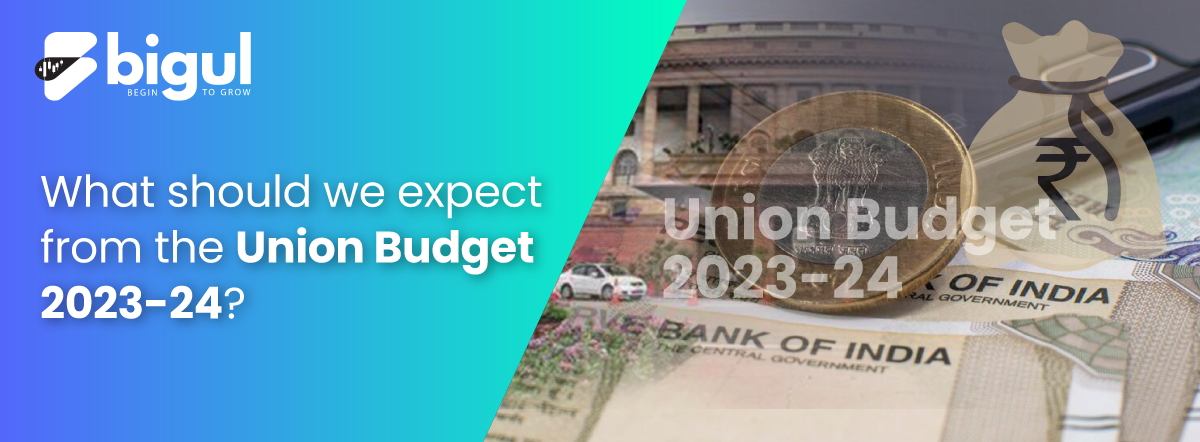The Modi government is set to present the Union Budget on 1st February’23. This would be the last full budget before the General Elections which are scheduled next year. We expect this year’s budget to be good, with something in store for each sector. The Government is also in a better position to spend money as the Direct Tax collections have been good so far. In 2022, the Indian government reported record-breaking tax receipts. India’s enormous capacity for consumption is demonstrated by the direct tax collection, which as of January 10, 2023, was at Rs 14.71 lakh crore, or +24.58% more than it was during the same period in the previous year.
Mentioned below are some of the important Economic Indicators which give us an insight into the current state of the economy.
GDP Growth Rate: The Budget 2023-24 will be presented on the backdrop of RBI slashing growth forecasts to 6.8% for the current fiscal. In its report, the organisation for Co-Operation and Development (OECD) expects India’s GDP to further slow to 5.7% in FY23-24. Even with the GDP growth rate fall, India is still the fastest-growing major economy.
All is not gloomy for India as India is better positioned to navigate global headwinds than other emerging economies as said by World Bank in its report titled “Navigating the Storm”.
Inflation:
The CPI Inflation rate for the month of November’22 eased to 5.88%, well below the forecasts of 6.4%, the lowest in 11 months. RBI expects Inflation for the fourth quarter of the current fiscal to be under 6% which is the upper end of the central bank’s target. The Consumer Food Price Index (CFPI) or the inflation in the food basket too eased month-on-month in November to 4.67%, from 7.01% in October. Source: MOSPI, Trading economics
Current Account Deficit:
As per RBI’s latest circular, India’s current account deficit for the second quarter is US $ 36.4 Billion which is 4.4% of the GDP versus $18.2 billion (2.2% of GDP) QoQ and a deficit of $9.7 billion (1.3% of GDP) YoY.
The biggest factor contributing to the spike in CAD spike was the widening of the merchandise trade deficit to US$ 83.5 billion from US$ 63.0 billion in Q1:2022-23 and an increase in net outgo under investment income.
GST Collections:
GST Collections data released recently showed that Gross GST Collections for the month of December’22 came at 1.50 lakh core Up 15.2% on a YoY basis and up 2.5% on an MoM basis.
Manufacturing PMI:
India’s Manufacturing industry finished 2022 on a high note as Manufacturing data for the month of December’22 rises to 57.8% marking the 18th straight month of expansion.
Our Expectations from this Budget
- Extension of the PLI Scheme to include new sectors:
The government has introduced the scheme for as many as 14 industries by now with a budget of nearly ₹ 2 lakh crore, which involves white goods, auto components and automobiles, food products, textiles, pharma, high-efficiency solar PV modules, advanced specialty steel and chemistry cells.
In our view, the government is expected to offer tax benefits for the manufacturing of toys, leather goods, bicycles and the footwear sector. This step will lead to job creation in potential sectors.
2) Spending on Railways, Jal Jeevan Mission
In the Union Budget, the railway makes up around 15% of the government’s capital expenditures. In this year’s budget, we anticipate a 10% rise in government CAPEX spending on railroad-related projects. The main areas of concentration would be restructuring the rail system, rail electrification, station reconstruction, and Vande Bharat trains.
3) Changes in Capital Gains exemption limits
There is a buzz among market participants that the time limit of 1 year could be increased in order to encourage real long-term investing. We don’t anticipate a rise in the LTCG tax rate.
The current capital gain on publicly traded shares is regarded as long-term if the holding period is 1 year. InvITs (Infrastructure Investment Trusts) and REITs (Real Estate Investment Trusts) fall within the category of long-term capital assets if carried out for at least 3 years. The holding period for units of REITs and InvITs should be set for a year rather than 3 years in order to obtain equivalence in tax treatment and for the purposes of calculating capital gains tax.
4) Increased allocation for Defence Sector
We anticipate a rise in capital budgetary allocations adjusted against inflation and unusual expenditures, a 13% y-o-y rise compared to the prevailing year’s budget.
The Goods and Services Tax (GST) is a significant expense for the defence industry. The government can think about enacting exemptions for the import of strategic and vital components for the domestic production of defence platforms.
5) Corporate Tax Rate
The lower corporate tax rate of 15%, which is currently available under the direct tax laws for new manufacturing companies, was extended by one year in budget 2022 i.e. till March 2024. In Our view, this tax scheme could be extended for 1 more year.
6) Divestment
After 2 years of dismal performance on the divestment front, we expect the government to go slow on the divestments this year and could set a target of below 60,000 Crs.
7) Tax breaks for Renewable & Green Energy
The government can consider giving higher depreciation benefits, and lower tax rates for the companies in the Renewable Energy space to encourage CAPEX in building the ecosystem.
8) Dose of Populism
We expect the Government to sprinkle the budget with a dose of populism. Indulging the middle class by making cosmetic changes to the income-tax slabs. Broadening of the welfare programs with increased maternity benefits and improved old-age security.








.jpg)
.jpg)
